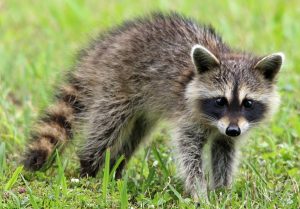Raccoons might not pose much of a problem while living their lives in the wild. But when they intrude on your property, the problems can quickly ramp up. Not only are raccoons quite violent animals when confined to close quarters, but they can also carry disease, including rabies.
In this post, we will discuss how NYC raccoon removal works and how it can help you get rid of this pest from your property.
Step 1: Ask For An Inspection
The first step is to ask professionals to thoroughly inspect your property to check whether you have raccoons or not. Sometimes you might see evidence of wild animals living on your property, but you might not be able to identify the exact species. Trained pest removal experts can assess your situation, look for telltale evidence of raccoon activity, and provide you with a clear picture of what is going on.
Raccoon trapping and removal differ from state to state. In NYC, raccoons are protected by law. Anyone removing them must have a license from the New York State Department of Environment Conservation. Once professionals trap the animal, they must follow entirely humane methods to remove it.
Step 2: Removal Of Raccoons
The next step is to remove the raccoon from your property. The difficulty of doing this depends on their location.
If they are in the attic or the basement, we may use special traps to capture them without hurting them so that we can remove them from your property.

Step 3: Cut Off Sources Of Food
Once professionals remove raccoons from your property, they will then use methods to reduce the likelihood of them returning. Usually, this means removing any food sources in your kitchen, attic, and garage and blocking any access points to your home.
Remember, raccoons have an exceptionally well-developed sense of smell – something that attracts them to your home in the first place. Furthermore, unlike many pests, they have highly dexterous hands, allowing them to undo tubs of food and get at the goodies inside.
Step 4: Euthanasia Or Release
Depending on the situation, pest control specialists will either euthanize the animal or release it back into the wild, well away from cities and property.
Step 5: Restoring Your Property
Raccoons have a habit of doing considerable damage to the spaces in your home they occupy. In attics, for instance, they like to rip up your insulation and use it as bedding.
Attic restoration often involves repairing the damage done and ensuring that access points are cut off so that your raccoon problem doesn’t recur in the future. It isn’t good for you or the animals concerned.
Raccoon trapping in NYC is, therefore, a tool that you can use to remove these problem pests from your home. Remember, these animals are large, weighing between 20 and 30 pounds, and can carry disease. Allowing them to run riot in your house risks damage and spreading disease. Removing them as fast as possible is always the best policy.
